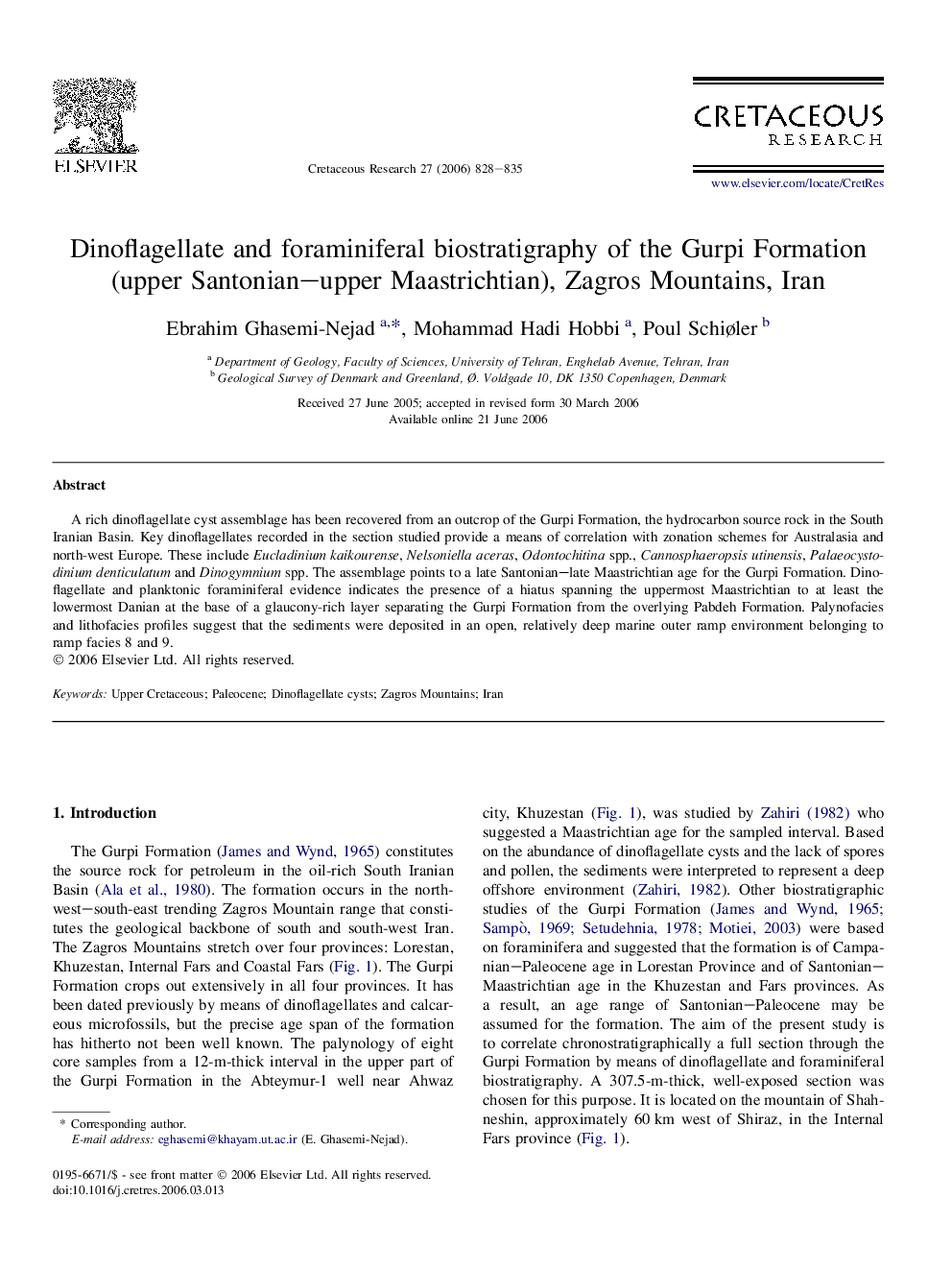| Article ID | Journal | Published Year | Pages | File Type |
|---|---|---|---|---|
| 4747754 | Cretaceous Research | 2006 | 8 Pages |
A rich dinoflagellate cyst assemblage has been recovered from an outcrop of the Gurpi Formation, the hydrocarbon source rock in the South Iranian Basin. Key dinoflagellates recorded in the section studied provide a means of correlation with zonation schemes for Australasia and north-west Europe. These include Eucladinium kaikourense, Nelsoniella aceras, Odontochitina spp., Cannosphaeropsis utinensis, Palaeocystodinium denticulatum and Dinogymnium spp. The assemblage points to a late Santonian–late Maastrichtian age for the Gurpi Formation. Dinoflagellate and planktonic foraminiferal evidence indicates the presence of a hiatus spanning the uppermost Maastrichtian to at least the lowermost Danian at the base of a glaucony-rich layer separating the Gurpi Formation from the overlying Pabdeh Formation. Palynofacies and lithofacies profiles suggest that the sediments were deposited in an open, relatively deep marine outer ramp environment belonging to ramp facies 8 and 9.
